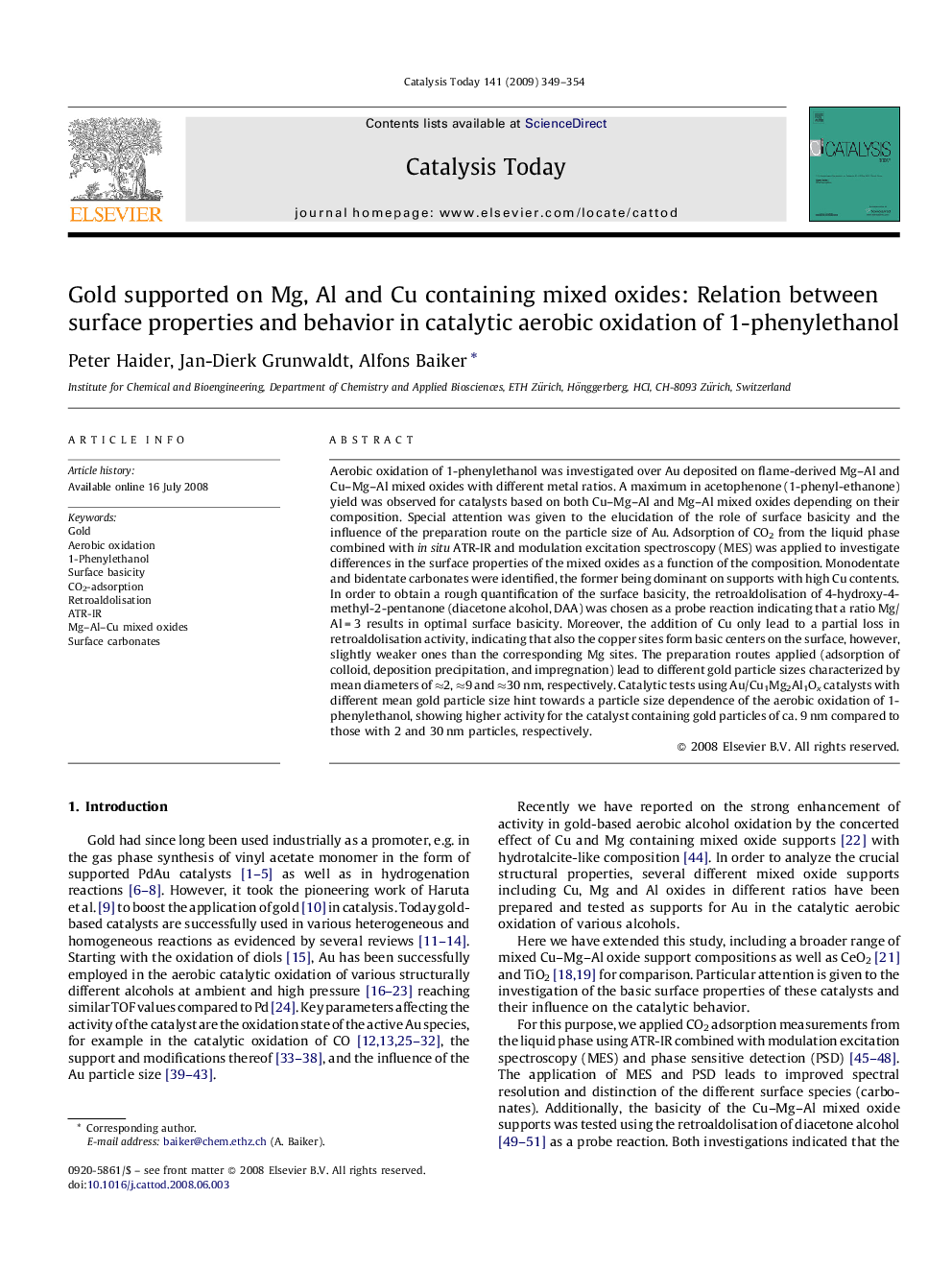| Article ID | Journal | Published Year | Pages | File Type |
|---|---|---|---|---|
| 56848 | Catalysis Today | 2009 | 6 Pages |
Aerobic oxidation of 1-phenylethanol was investigated over Au deposited on flame-derived Mg–Al and Cu–Mg–Al mixed oxides with different metal ratios. A maximum in acetophenone (1-phenyl-ethanone) yield was observed for catalysts based on both Cu–Mg–Al and Mg–Al mixed oxides depending on their composition. Special attention was given to the elucidation of the role of surface basicity and the influence of the preparation route on the particle size of Au. Adsorption of CO2 from the liquid phase combined with in situ ATR-IR and modulation excitation spectroscopy (MES) was applied to investigate differences in the surface properties of the mixed oxides as a function of the composition. Monodentate and bidentate carbonates were identified, the former being dominant on supports with high Cu contents. In order to obtain a rough quantification of the surface basicity, the retroaldolisation of 4-hydroxy-4-methyl-2-pentanone (diacetone alcohol, DAA) was chosen as a probe reaction indicating that a ratio Mg/Al = 3 results in optimal surface basicity. Moreover, the addition of Cu only lead to a partial loss in retroaldolisation activity, indicating that also the copper sites form basic centers on the surface, however, slightly weaker ones than the corresponding Mg sites. The preparation routes applied (adsorption of colloid, deposition precipitation, and impregnation) lead to different gold particle sizes characterized by mean diameters of ≈2, ≈9 and ≈30 nm, respectively. Catalytic tests using Au/Cu1Mg2Al1Ox catalysts with different mean gold particle size hint towards a particle size dependence of the aerobic oxidation of 1-phenylethanol, showing higher activity for the catalyst containing gold particles of ca. 9 nm compared to those with 2 and 30 nm particles, respectively.
